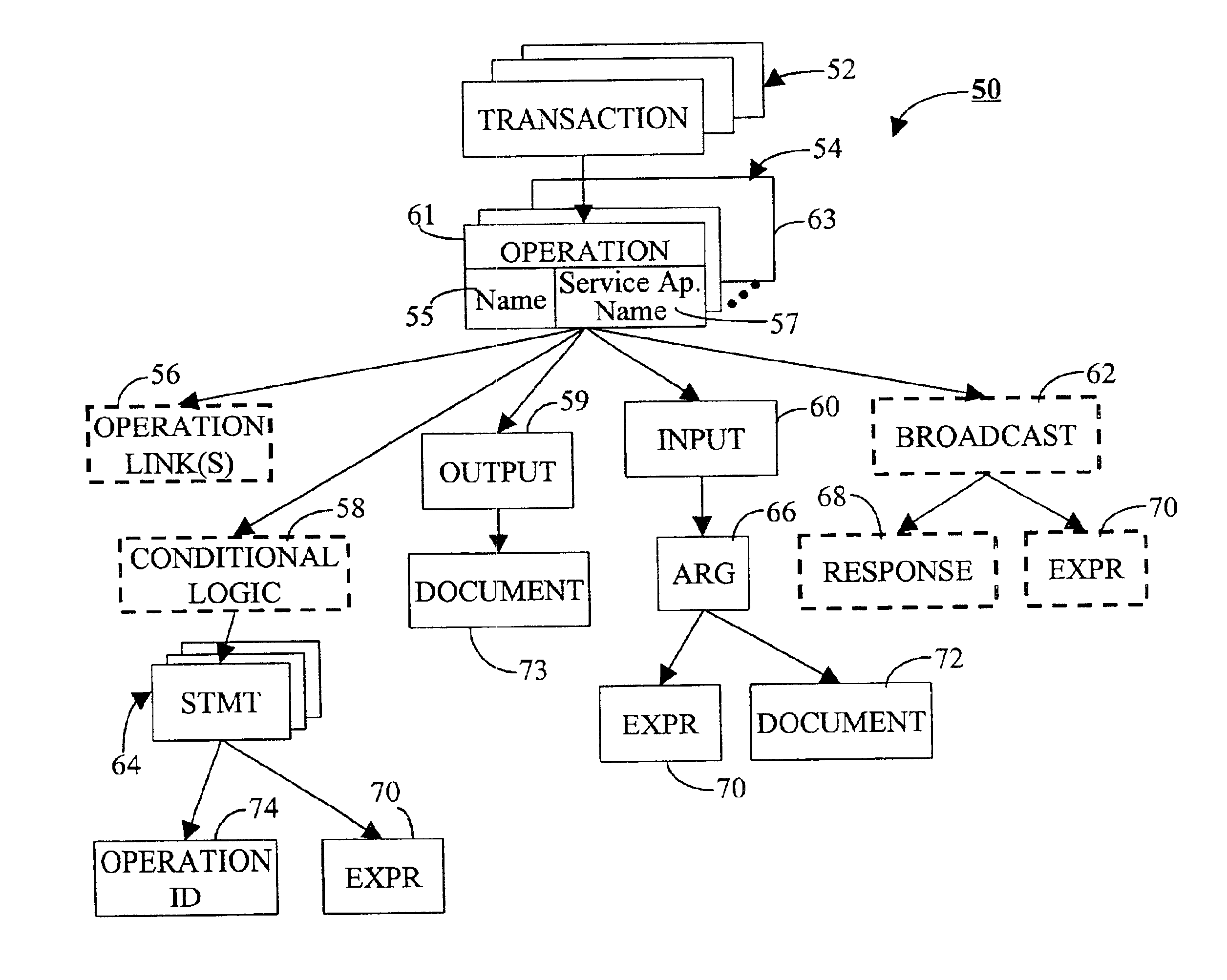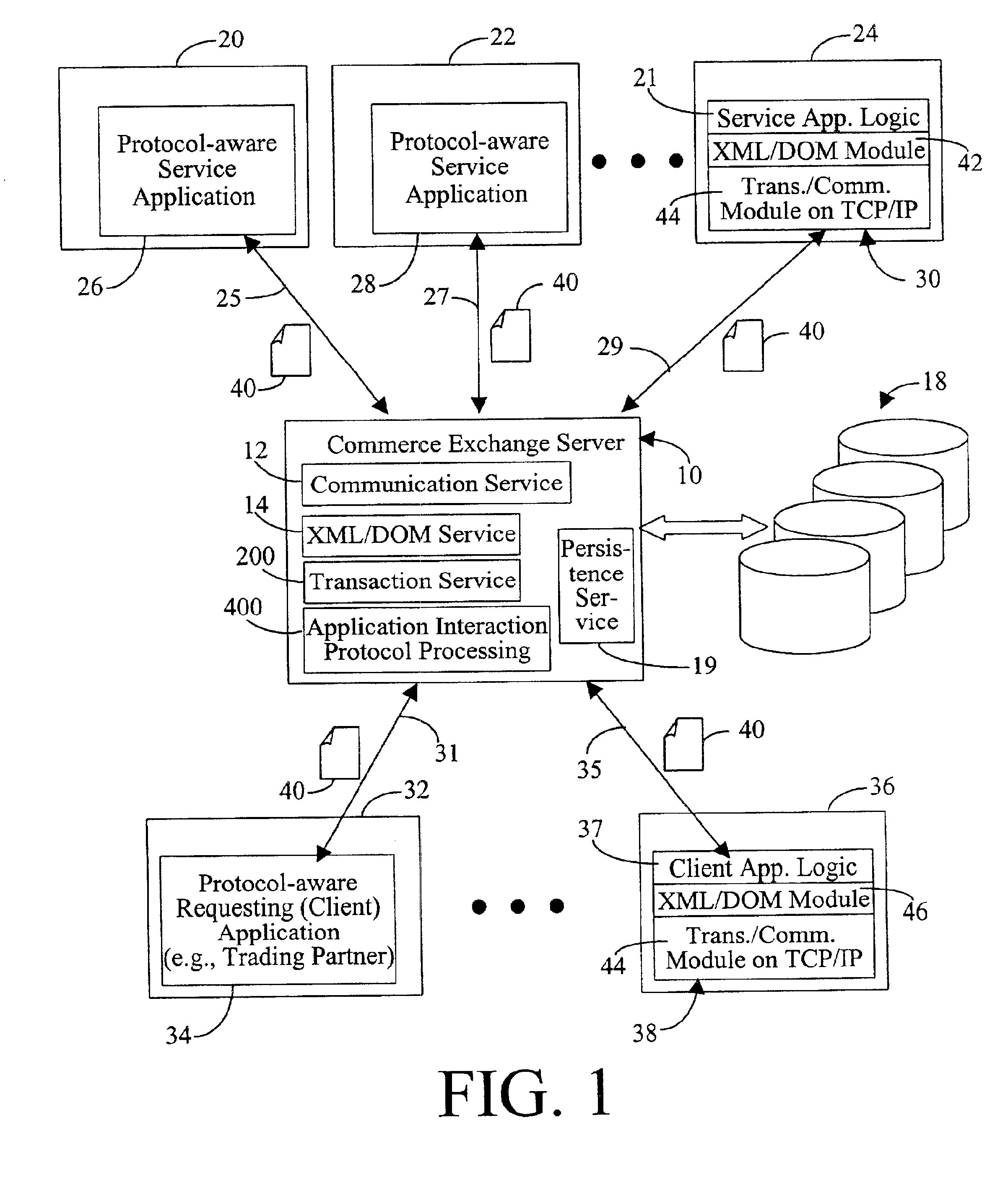Transaction data structure for process communications among network-distributed applications
- Summary
- Abstract
- Description
- Claims
- Application Information
AI Technical Summary
Benefits of technology
Problems solved by technology
Method used
Image
Examples
example 2
defines a transaction whose name is “anotherTransaction” whose run-time instances should be saved and has no maximum execution time restrictions.
[0081]
EXAMPLE 2
[0082]TRANSACTION section 84 points to OPERATION section 86. Each operation must specify a NAME, OPID, and CXCNAME, and optionally a TIMEOUT value. The name specifies the logical name of the operation, and will often correspond to the service application (CXC) that executes it. There are two reserved names for two required operations known as CXtsHeadop and CXtsTailOp. Every transaction must have a CXtsHeadOp and a CxtsTailOp; the CXtHeadOp is always the first operation in a transaction, and the CXtsTailOp is always the last. These operations are in addition to any operations that are to be included in the transaction. The OPID is a numeric value that must be unique within the transaction definition; no other operation within the transaction may have the same OPID value. The CXCNAME specifies the logical name of the CXC (serv...
example 3
defines a simple operation whose name is “myOperation”, has an ID of “1” which can be executed by the service application, “myCXC”, and can take at most 60 seconds to execute.
[0084]
EXAMPLE 3CXCNAME=“myCXC” TIMEOUT=“60 / >
example 4
defines an operation whose name is “anotherOperation”, has an ID of “3”, whose CXC should be determined by the CX for each run-time instance, and has no restrictions on the amount of time it can take to execute.
[0085]
EXAMPLE 4CXCNAME=“*” / >
[0086]OPERATION section 86 points to OPLINK section 85. A link between two operations is specified using an OPLINK section. Each OPLINK section includes a single SRCOPID tag and DSTOPID tag. There can be 1−n OPLINK sections per operation. The SRCOPID tag is the operation ID of the operation where the link starts, and the DSTOPID tag is the operation ID of the operation where the link ends. Although not required, it is good practice to have the SRCOPID match the OPID of the OPERATION section that contains the OPLINK section.
[0087]Operation links define the order of execution of the operations. When one operation completes its execution, the operation links specify the set of operations that may be executed as a result. An operation is ready for exec...
PUM
 Login to View More
Login to View More Abstract
Description
Claims
Application Information
 Login to View More
Login to View More - R&D
- Intellectual Property
- Life Sciences
- Materials
- Tech Scout
- Unparalleled Data Quality
- Higher Quality Content
- 60% Fewer Hallucinations
Browse by: Latest US Patents, China's latest patents, Technical Efficacy Thesaurus, Application Domain, Technology Topic, Popular Technical Reports.
© 2025 PatSnap. All rights reserved.Legal|Privacy policy|Modern Slavery Act Transparency Statement|Sitemap|About US| Contact US: help@patsnap.com



